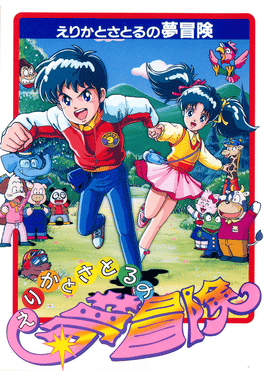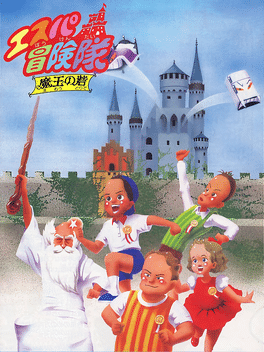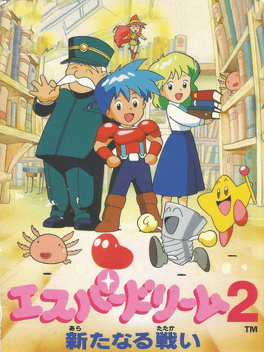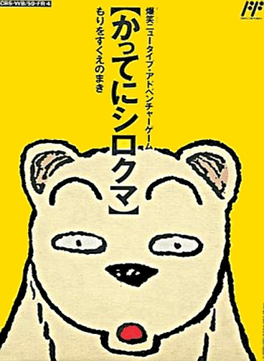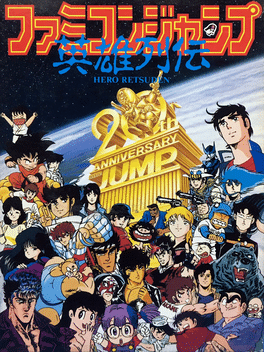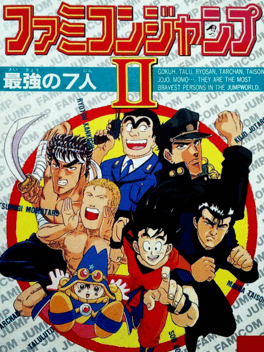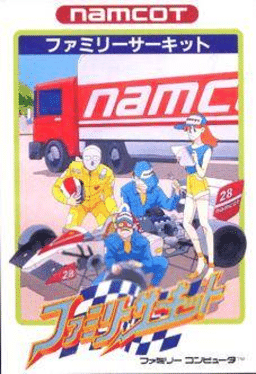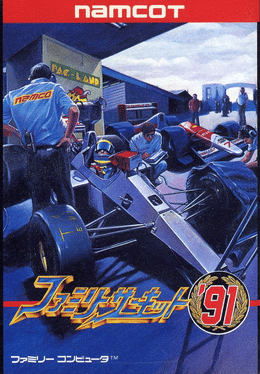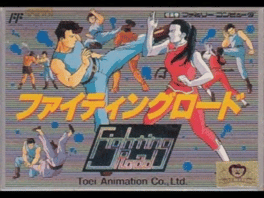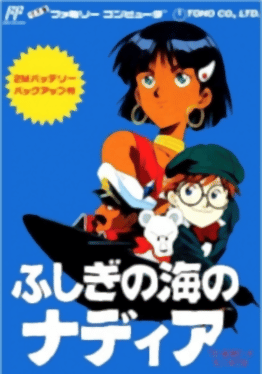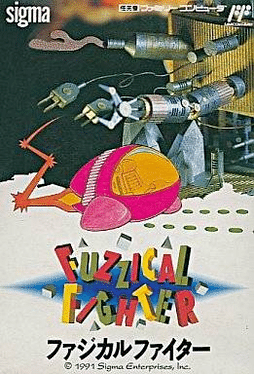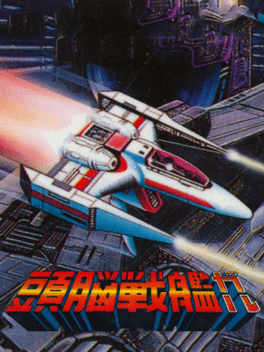Most Popular Family Computer Games - Page 41
-
Erika to Satoru no Yume Bouken
1988
Erika to Satoru no Yume Bouken is a 1988 Japan-exclusive adventure video game for the Famicom. It is a fairytale-inspired menu-driven adventure game. Players use the menu commands to interact with the world: moving around, looking around, picking up objects, talking to people, etc. The setting of this game is 20th century Japan. In a novel twist, the two characters of Erika and Satoru (who are depicted as twin schoolchildren) are independently playable - either a single player switches between the two, or a second player takes over the second twin. Both characters need to be in the same region to converse with NPCs, but are otherwise free to explore the map autonomously. Two-player adventure games are very rare; even in Japan. However, only one person can partake in the animal quiz portion. Failing the quiz will force the player(s) to start from the beginning. An odd bit of infamy related to this game is a secret developer's message that can be found if the player inputs a list of button presses after waiting som -
Elnark no Zaihou
1987
Elnark no Zaihou
1987
Elnark no Zaihou is an adventure game developed and published by Towachiki. It presents the action from an overhead perspective, similar to many of the traditional 2D Zelda games. It is unusual in that it tracks the player's behavior and adjusts a meter which indicates whether the player is generally more good (Light) or more evil (Dark). Though a more evil player has stronger abilities, players must air on the side of good in order to make significant advances through the game. As a result, this game is considered extremely difficult, due to the unknown nature of how one should behave in order to proceed. If the player does not perform the correct actions, levels typically repeat themselves, and players find themselves stuck in the game with no clear method to advance. In fact, it was one believed that the only way to beat the game was to exploit a bug, however that has since been proven false. -
Esper Boukentai
1987
Esper Boukentai
1987
Esper Boukentai is a platform action game developed by Jaleco for the Famicom and published in 1987. It is an exploration game which uses Jaleco's arcade game Psychic 5 as the basis for the story and the cast of characters which you use throughout the game. Each character possesses different attributes, including their jumping ability, their ability to hover in mid-air, and their strength. As in the arcade, some characters must be rescued in order to make them playable. This game boasts over 50 household items which serve as animated enemies throughout each level. -
Esper Dream 2: Aratanaru Tatakai
1992
Esper Dream 2: Aratanaru Tatakai is a Role-Playing game, developed and published by Konami, which was released in Japan in 1992. -
Exciting Boxing
1988
Exciting Boxing
1988
Exciting Boxing is a Sports game, developed by Human Entertainment and published by Konami, which was released in Japan in 1987. -
Ginga no San-nin
1987
Ginga no San-nin
1987
In the year 2300, the human race created an Earth federation government and spread out into space to begin colonizing the surrounding planets. However, an alien species from the far reaches of outer space began attacking the human forces, putting the very survival of the human race at stake. Though it was only a matter of time before Earth fell to the enormous power of the enemy forces, the Earth's army commander issued an order calling all of the units dispersed around the colonized planets to return to Earth. The player takes the role of a young soldier who was stationed with the Rayieza unit on the planet Mars. The journey begins as he makes his way back to Earth along with the other members of his unit. -
Famicom Doubutsu Seitai Zukan! Katte ni Shirokuma: Mori wo Sukue no Maki!
1990
Famicom Doubutsu Seitai Zukan! Katte ni Shirokuma: Mori wo Sukue no Maki! is an Adventure game, published by CBS Sony Group, which was released in Japan in 1989. -
Famicom Jump: Hero Retsuden
1988
Famicom Jump: Hero Retsuden is a 1989 role-playing video game for the Family Computer published by Bandai. The game commemorates the 20th anniversary of Shueisha's manga anthology Weekly Shōnen Jump. Set in a world that brings together many of the long-running titles that had appeared in the magazine, both of the past and present at the time of its release. The game consists of a main character wandering and encountering the many Jump heroes as they try to save the world from an alliance of many of the most powerful and evil of the Jump villains. -
Famicom Jump II: Saikyou no 7-nin
1992
Famicom Jump II: Saikyou no 7-nin is a 1991 RPG for the Nintendo Family Computer published by Bandai. The sequel to Famicom Jump: Hero Retsuden, the game features seven main characters (as the subtitle indicates) from different Weekly Shōnen Jump manga serialized at the time. Only four of the 16 represented titles from the original are brought back, while the remaining three are new to the sequel. There would not be another crossover game until the release of Jump Super Stars and Jump Ultimate Stars. (of which six of these series would be represented, the only one not being Magical Tarurūto-kun.) -
Family Circuit
1988
Family Circuit
1988
Family Circuit is a Racing game, developed by Game Studio and published by Namco, which was released in Japan in 1988. -
Family Circuit '91
1991
Family Circuit '91
1991
Family Circuit '91 is a Racing game, developed by Game Studio and published by Namco, which was released in Japan in 1991. -
Family Quiz 4-nin wa Rival
1988
Family Quiz 4-nin wa Rival (ファミリークイズ 4人はライバル? lit. Family Quiz 4 Man Rivalry) is a Japanese trivia game devloped by Athena for the Famicom, and published in Japan in November of 1988. This game was Athena's first console release. With a focus on family play, the game allows for four players to compete simultaneously. The goal is to beat the other opponents in four mini-games, each requiring that the player answer some Japanese trivia questions in order to proceed. The four mini-games are based on a game show, a board-game, the game of Othello, and a memory match game. In the game show, the only version that allows for just one player, answering questions correctly raises that player's podium towards a balloon. The other versions require at least two players, and turns may only be taken after players have answered a trivia question correctly. -
Famista '89: Kaimaku Ban!!
1989
Famista '89: Kaimaku Ban!! is a Sports game, developed and published by Namco, which was released in Japan in 1989. -
Fighting Road
1989
Fighting Road
1989
Fighting Road is an Action game, developed and published by Toei Animation, which was released in Japan in 1988. -
Fleet Commander
1988
Fleet Commander
1988
Fleet Commander is a strategy game developed and published by ASCII Entertainment for the Famicom in 1988. It is the first naval battle game ever released for the system. While it supposedly depicts a battle between two fictional countries, the game is largely recognized to be a recreation of one of the crucial naval battles that occurred between Japan and the United States near the end of World War II. Players control a Japanese fleet of heavy cruisers, battleships, submarines and aircraft carriers. A couple of things set this game apart from typical Famicom games. First, in addition to the cartridge and the manual, the game also came packaged with a large map and plastic models which represented ships and airplanes. The game never shows the entire state of the water, so it is up to the player to use the information that he or she has to update the representation of battle on the map using the plastic models. Second, no background music is heard while playing this game. Finally, this game makes use of a device kn -
Hikari no Senshi Photon: The Ultimate Game on Planet Earth
1987
Photon: The Ultimate Game on Planet Earth is an adventure game developed for the Famicom by Takara, and published in 1987. The English name of the game has special significance, since "Photon: The Ultimate Game on Planet Earth" is also the name of the first commercial version of a game commonly known today as Laser Tag. However, besides the name, and the fact that you play a character who fires a Photon gun, any further connection between the live action game and this video game is unknown. In the video game, you play a soldier who must navigate through several different floors of a dungeon which contains items and traps. The player must figure out how to maneuver through the dungeon in an effort to collect various items that will expand his ability to search, and find various disks which contain hints and messages to further aid the player. The game is played from a third-person behind-the-shoulder perspective and contains pseudo-3D visuals. This game was never released outside of Japan. -
Fushigi no Umi no Nadia
1991
Fushigi no Umi no Nadia is a Strategy game, developed by Advance Communication Company and published by Toho, which was released in Japan in 1991. -
Fuzzical Fighter
1991
Fuzzical Fighter
1991
The Dimensional Stone, which is required to maintain balance in the world of starship pilot Mark was stolen. The king finds a hero to retrieve the stone; using the "Fuzzical Fighter" to transport the player's character into enemy territory. Towns are visited in-between stages to provide the player with weapons and artificats that are bought with the in-game gold currency. Players can choose to backtrack to either to previous stage while staying at the inn or to a stage that he has not yet explored. They also have access to three different kinds of healing spells: Riken (minor healing), Rikento (normal healing) and Rikentaru (major healing). Despite being a mechanical object and not a creature, the Fuzzical Fighter has magic points that can be replenished while in the towns. The Fuzzy Fighter itself resembles a spaceship with a mechanical tail at the end. -
Zunou Senkan Galg
1986
Zunou Senkan Galg
1986
Zunou Senkan Galg ("Brain Battleship Galg"), referred to as just Galg by the game's title screen, is a vertical-scrolling shoot-em-up in which the player must navigate a serious of canyon-like environments for missing pieces to a war machine. Each stage has at least one piece, so the player must visit them all in order to find the necessary number. In addition to this, there are numerous secrets hidden throughout the many stages of the game, and the player frequently has to choose between multiple paths which lead to different stages. The game advertises itself as a "RPG" on its box art, referring to this additional layer of complexity. Like The Tower of Druaga, it is considered a historically important game in Japan for the amount of secrets and mysteries it contains and the subsequent difficulty involved in reaching the end without this hidden knowledge. Therefore, it was one of the earliest games for the Famicom to feature its own printed game guide for players to follow. Zunou Senkan Galg is almost entirely un -
Ganso Saiyuuki: Super Monkey Daibouken
1986
Sun Wukong must assist the Buddhist monk Xuanzang with his task of collecting some sūtras as they make the treacherous voyage from China to India. Other guardians can be asked to join the adventuring party after meeting up with them. Most of the storyline in this video game is based on the Chinese novel Journey to the West. Players can enter a code that allows them to return to any stage at any time.
